Pakistan Army Chief Meets Iranian President To Improve Ties
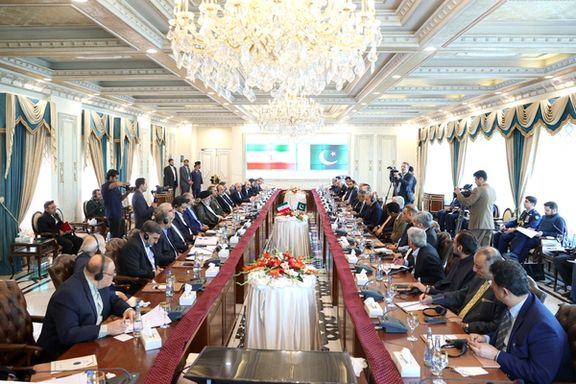
Iranian President Ebrahim Raisi met Pakistan's army chief, Syed Asim Munir, during a three-day visit to Pakistan as the two countries aim to deepen ties after a year marked by conflict.

Iranian President Ebrahim Raisi met Pakistan's army chief, Syed Asim Munir, during a three-day visit to Pakistan as the two countries aim to deepen ties after a year marked by conflict.
Tensions escalated three months ago when Pakistan conducted airstrikes in southeastern Iran following attacks by Iran’s Revolutionary Guards within Pakistani territory. Both countries stated that their strikes aimed at "terrorist hideouts", both ended up with civilian deaths including women and children.
Iran claimed its operations targeted bases of the Sunni militant group Jaish al-Adl, while Pakistan said its attacks were directed at insurgents generally referred to as "Sarmachar."
During his visit, Raisi also held discussions with Pakistani Prime Minister Shehbaz Sharif. The two countries restored diplomatic relations in January after the border clashes had seen ambassadors recalled for a short period. In January, a joint naval exercise was held by the two nations off the coast of Bandar Abbas, involving combat vessels and missile-launching warships.
The relationship between Pakistan and Iran has been complex. Iran sees Pakistan as influenced by Islamabad's historically closer ties to Saudi Arabia and the United States.
Earlier this year, the US blocked a planned gas line project revival between Pakistan and Iran, warning it would result in more US sanctions. It has been on hold for over a decade.

Around 4 am on April 19, Isfahan province was jolted by three powerful explosions. Israel's missiles had reached far into Iranian territory, a mere six days after Tehran's own drone and missile attack on Israel.
Despite the clear evidence of the strike, the Islamic Republic persisted in its state of denial.

What Does Israel's Strike Reveal About Iran's Air Defence System?
According to US sources, three missiles were launched towards Isfahan’s Eighth Shekari Air Base from outside Iran's airspace, breaching its air defense shield. The strike, as shown by satellite imagery, caused damage to the engagement radar, a crucial component of Iran's S-300 air defense systems. The S-300 is a family of Russian-made surface-to-air missile (SAM) systems.

Just a day or two before the attack, media affiliated with the Islamic Republic boasted about Iran's air defense system's capability and readiness to confront Israeli fighter jets and precision missiles by publishing images of Iranian made air defense systems. In recent years, Iran has undergone a notable evolution in its air defense capabilities. As of the end of 2023, Iran boasts the development of 21 indigenous mobile air defense systems. These systems offer comprehensive coverage, spanning from low to high-altitude surveillance air defense systems.

Among these layers stands the Bavar-373 (Belief) long-range air defense system, claimed to surpass both the Russian S-300 and U.S. Patriot systems. The Islamic Republic boldly asserts that the Bavar-373 possesses the capability to detect and engage high-altitude and stealth aircraft, helicopters, drones, as well as anti-radiation, ballistic, and cruise missiles. Similar to the S-300, the Bavar-373 includes a command vehicle, search radar, engagement radar, and up to six launchers.


In 2016, Iran acquired four S-300 battalions from Russia, predating the introduction of the Bavar 373 in 2019. Allegedly, half of one of S-300 battalions is annually redeployed to Mashhad to safeguard Iran's Supreme Leader, Ali Khamenei. Yet, with the presence of the S-300 in Isfahan's airbase, targeted by Israeli missile strikes, and the periodic relocation of part of the S-300 battalion to Mashhad during Khamenei's annual visits to the city, one might question Iran's professed confidence in its indigenous air defense.
Underestimation: A Risky Gambit
The precision strike executed by Israeli fighter jets, coupled with the dismantling of the radar engagement system in Iran's S-300 air defense network, starkly exposes the vulnerabilities within Iran's aerial shield. US military sources suggest that the strike was intended to demonstrate Israel's ability to penetrate Iran's defensive systems unnoticed. However, one should not underestimate Iran's determined efforts to bolster and expand its air defense capabilities.
On June 20, 2019, Iranian forces downed a US military surveillance drone flying over the strategic Strait of Hormuz. The Khordad 3 anti-aircraft system was hailed as the hunter.


Some military analysts argue that Israeli long-range missiles were fired from Iraq's airspace onto an airbase in Isfahan. Iran's bold move of arming so called ‘Axis of Resistance’ group has already set the stage for chaos. If the Islamic Republic succeeds in deploying air defense systems to its regional proxies, establishing a defensive stronghold in Lebanon, Syria, Iraq, and even Yemen, it would create an air defense axis, presenting a significant challenge to the aerial supremacy of Israeli forces and their allies, which were one of the key factors in Israel's success in intercepting 99% of Iran's projectiles on April 12. This journey is well underway, as evidenced by the shootdown of an American MQ-9 Reaper drone, by Iran-backed Houthi forces in Yemen on November 8,2023 . Farzin Nadimi, a Senior Fellow with The Washington Institute, attribute the likely use of Iranian-made "Item 358" air defense cruise missiles in the attack.

Expanding its arsenal beyond the existing 21 mobile air defense systems, the Islamic Republic introduced two additional defense systems: The Arman anti-ballistic missile system and the Azarakhsh low-altitude air defense system. Unveiled by the Ministry of Defence on February 19, these additions underscore Iran's ongoing efforts to enhance its aerial defense capabilities.
Disregarding the satellite images that prove the accuracy of Israeli military tech, the country’s Supreme Leader, Ali Khamenei, brushes off the low success rate of the Islamic Republic's missile launches as “secondary issue”.
What was scarcely mentioned in his meeting with high-ranking military commanders on Sunday was his emphasis on innovation in armaments. He remarked: "We mustn't pause for a moment, as stagnation implies regression. Therefore, innovation in armaments and tactics, along with a thorough understanding of the enemy's strategies, should always remain a priority."
The directive from the Leader of the Islamic Republic is crystal clear: the enhancement of Iran's air defense system extends beyond national borders to include its proxy forces.
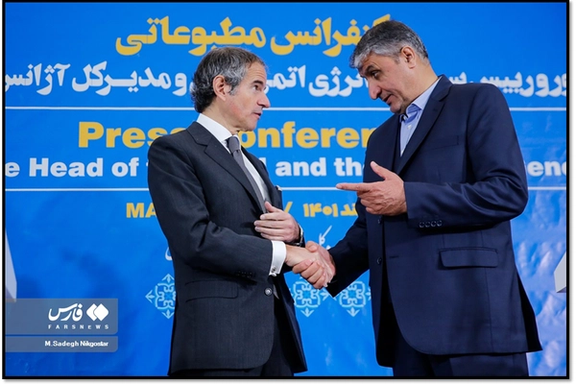
The head of Iran's Atomic Energy Organization has reiterated plans to expand the number of nuclear power plants, aiming to reach a production capacity of 20,000 megawatts of nuclear electricity.
Mohammad Eslami on Tuesday once again claimed that the project "seeks to align Iran with global standards in nuclear power production," referring to boosting electricity generation using nuclear reactors. Iran already has a reactor, built by Russia, which contributes a small amount of electricity to the grid.
However, Tehran pursues a second track in its nuclear activities by enriching uranium to 60-percent purity, which could only have a weaponization purpose. The International Atomic Energy Agency (IAEA) has repeatedly warned that Iran is exceeding its enrichment limits.
The IAEA Director General, Rafael Grossi, in an interview with DW, said Iran's rapid uranium enrichment is "weeks rather than months" from accumulating enough enriched uranium for a nuclear bomb, although he clarified that this does not imply an immediate capability to construct a nuclear weapon.
The project to build more reactors is mostly a plan at this stage, because Iran would need full foreign technical assistance, which even Russia might be reluctant to provide. Also, Iran is in a downward economic spiral and can hardly invest billions of dollars in such an expensive project, while it has vast natural gas reserves it can invest in and develop to boost power generation.
The IAEA has reported finding traces of enriched uranium at sites not declared by Iran, all while not allowing full access to the IAEA inspectors. Grossi stressed the importance of cooperation and access, suggesting that increased transparency is crucial for Iran if it wishes to be perceived as compliant with international nuclear norms.
"I have been telling my Iranian counterparts time and again... this activity raises eyebrows, and compounded with the fact that we are not getting the necessary degree of access and visibility that I believe should be necessary," Grossi stated.
Amid Iran's conflict with Israel which moved from a shadow war into the light this month, A senior IRGC commander warned last week that Tehran could change its nuclear policies if Israel continues to threaten to attack Iran’s nuclear sites, tacitly suggesting no cooperation with world bodies and building a nuclear bomb. It came after an alleged Israeli air strike targeting air defenses at Iran's nuclear sites.
“If the fake Zionist regime wants to use the threat of attacking nuclear sites to put pressure on Iran, it is possible and conceivable for the Islamic Republic to revise its nuclear doctrine and policies, and deviate from its past declared considerations,” said Ahmad Haghtalab, who is in charge of the security of Iran’s nuclear sites.
In February, Ali-Akbar Salehi, the former head of Iran's nuclear agency, implied that the country has everything it needs for an A-bomb: "We have [crossed] all the thresholds of nuclear science and technology. Here's an example: Imagine what a car needs; it needs a chassis, an engine, a steering wheel, a gearbox. You're asking if we've made the gearbox, I say yes. Have we made the engine? Yes, but each one serves its own purpose."
Earlier this month, an advisor to Iranian Parliament Speaker Mohammad-Bagher Ghalibaf hinted at Tehran’s military use of its nuclear program. “Iran has a nuclear program in addition to its missile program,” wrote Mehdi Mohammadi on X in what can be construed as a shrouded threat against Israel and its allies.
Meanwhile on the diplomatic stage, Tehran claims the enrichment is for medical and civilian purposes, although Grossi has said that no country in history has enriched to 60 percent without a goal to build nuclear weapons..
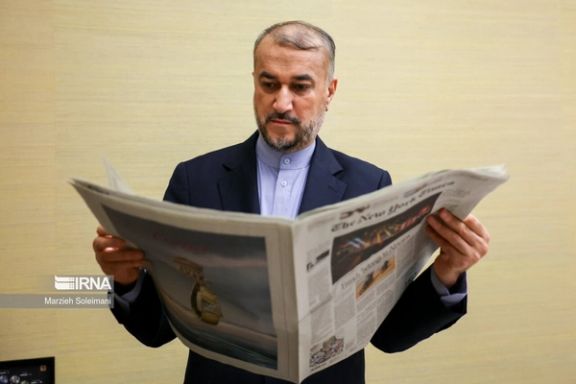
Iran's Foreign Minister Hossein Amir-Abdollahian criticized the European Union's recent decision to expand sanctions against Iran, labeling them "unlawful".
The EU's decision followed Iran's extensive drone and missile attack on Israel, which Tehran asserts was a defensive measure in retaliation to a suspected Israeli assault on its consulate in Damascus.
"It is regrettable to see the EU deciding quickly to apply more unlawful restrictions against Iran just because Iran exercised its right to self-defense in the face of Israel’s reckless aggression," said Amir-Abdollahian on X urging the EU to reconsider its sanctions strategy and instead impose penalties on Israel.
The sanctions aim to augment existing restrictions placed on Iran for its role in supplying drones to Russia, used in the ongoing conflict in Ukraine.EU foreign policy chief, Josep Borrell, mentioned that the sanctions would extend beyond Russia, addressing weapon deliveries to various regional proxies as well. Despite the actions, the EU has refrained from a formal "terrorist" designation of the Islamic Revolutionary Guard Corps (IRGC), citing a lack of legal foundation, although the European Parliament had previously endorsed such a designation.
The attack involved over 350 drones and missiles targeting Israel, escalating tensions in the region, mostly intercepted by Israel and a US-led coalition of allies. Following the incident, EU foreign ministers convened on Monday and preliminarily agreed to impose broader sanctions, particularly targeting Iran's weapon exports, including drones and missiles to proxies and Russia.
The finalization and implementation of the expanded sanctions will require further legal structuring in Brussels.
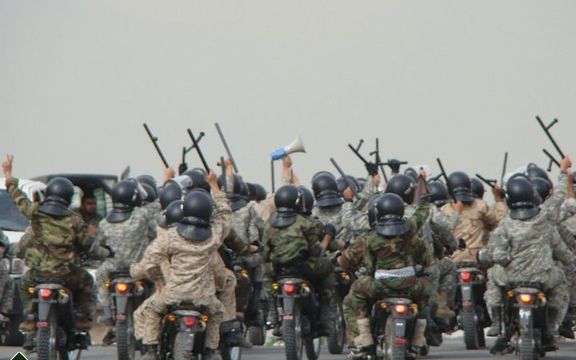
Human Rights Watch (HRW) has released a new report revealing instances of rape, torture, and sexual assault by Iranian state security forces against detainees during nationwide protests in 2022.
The findings, according to human rights experts, underscore the systematic use of torture and rape by authorities, exposing a troubling pattern of abuse aimed at suppressing dissent.
The Woman, Life, Freedom uprising in Iran was a nationwide protest movement that started in September 2022, following the killing of Mahsa Jina Amini, a 22-year-old Kurdish woman while in the custody of the regime’s so-called "morality police".
The protests persisted until at least January 2023 with over 500 protesters killed at the hands of state security forces, and over 19,400 protestors arrested as per reports by Human Rights Activists News Agency (HRANA).
HRW’s investigation focused on violations against 10 prisoners detained amid the protests.
Between September and November 2022, the detainees from Kurdish, Baloch, and Azeri minorities endured grave abuses at the hands of Iranian security forces.
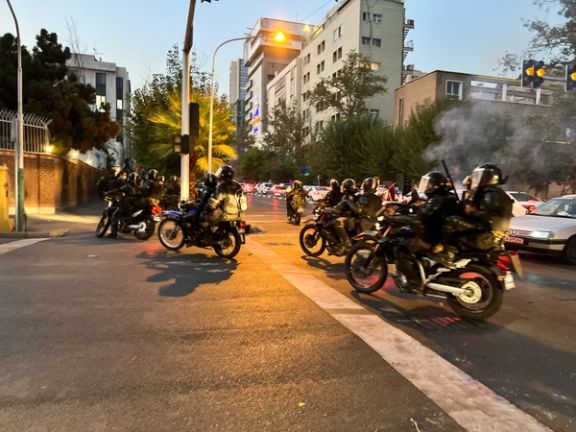
The victims, which included women, men, and children, provided HRW with testimonies of their experiences, recounting instances of torture and sexual assault inflicted upon them and other prisoners.
“Iranian security forces' brutality against detained protesters, including rape and torture, are not only egregious crimes but a weapon of injustice wielded against detainees to coerce them into false confessions,” said Nahid Naghshbandi, acting Iran researcher at HRW.
Naghshbandi also highlighted the systematic targeting of ethnic minorities in Iran, noting that the regime's use of rape and torture to further marginalize these communities.
Among the testimonies, a Kurdish woman revealed how she was raped by male security forces while their female colleague facilitated the assault in November 2022.
Another victim, a 24-year-old Kurdish man from West Azerbaijan province, described being tortured and raped with a baton after his arrest.
A 30-year-old man from East Azerbaijan Province told HRW how he and other protesters were subjected to gang rape by security forces in October 2022.
The report also brings attention to cases of suicide and severe physical trauma resulting from the sexual violence committed by the state's security officers. One woman is said to have taken her own life due to the emotional trauma inflicted upon her, while another required surgery to address injuries sustained during the assaults.
Emphasizing the urgent need for support and justice for survivors, Naghshbandi, stated that “accounts of brutal rape and the lasting traumatic consequences of those crimes should mobilize countries to meet the physical and psychological health needs of survivors who have managed to flee Iran...”
In response to HRW's findings, in an interview with Iran International, Mahmoud Amiri-Moghadam, director of Iran Human Rights, condemned the systematic use of torture and rape by various institutions of the Iranian regime, asserting that such atrocities must not go unpunished.
He underscored the importance of international awareness and accountability, urging the UN to take action against the perpetrators of these heinous crimes.
This latest report from HRW adds to a growing body of evidence documenting the widespread abuse of detainees by Iranian authorities.
Previous investigations by Amnesty International and the UN Fact-Finding Mission have similarly exposed the brutal tactics employed by Iranian authorities to suppress dissent.
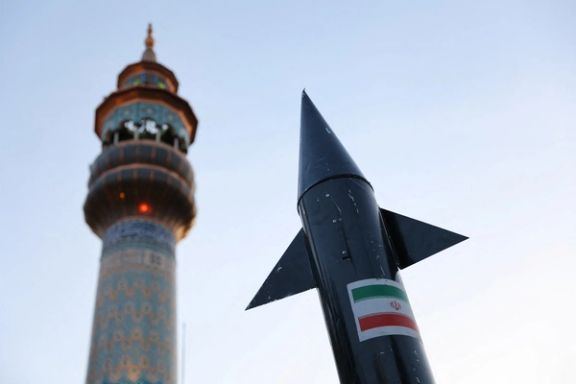
In assessing the statements of analysts and commentators about Iran’s foreign policy and human rights record, it is essential to be aware of their relationship with the government in Tehran.
In his latest article, "Iran-Israel tensions: Only a grand bargain in the Middle East can avert regional war," published on April 18, 2024, Seyed Hossein Mousavian once again casts the United States, Israel and NATO as the principal antagonists in the Middle East's ongoing turmoil, conveniently omitting the destructive roles played by Iran's own regime.
Mousavian's narrative fails to acknowledge how Iran’s Islamic regime has fueled regional instability by supporting and arming terrorist organizations such as Hezbollah, Hamas, and the Houthis. These groups have been pivotal in executing Iran's agenda, spreading violence and discord across the region.
Mousavian’s call for the West to engage in appeasement and offer incentives to Iran is a repetitive strategy that surfaces whenever the Islamic Republic faces international pressure or isolation. His articles typically push for a conciliatory approach towards Iran, advocating for unwarranted concessions without addressing the fundamental issues of Iran's sponsorship of terrorism and its blatant disregard for international norms. This biased viewpoint not only misrepresents the true dynamics of Middle Eastern conflicts but also undermines the pursuit of genuine peace and stability in the region.
No wonder that Iranian government-controlled media in Tehran extensively covered Mousavian’s article as a major development, showing the way forward for “peace in the region.”
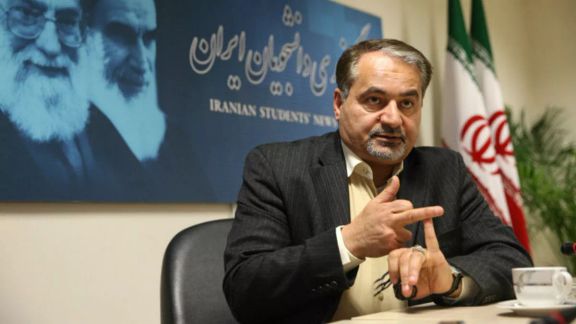
In discussing Iran-Europe relations, Mousavian paints a rosy picture of the diplomatic ties between Iran and Germany during the tenure of Germany's Chancellor Helmut Kohl and Iran's President Ali Akbar Hashemi Rafsanjani. Mousavian highlights the political, cultural, and economic collaboration fostered between the two nations, emphasizing Germany's opposition to US sanctions and their support for Iran through banking and insurance credits, which aided Iran's post-war reconstruction after Iraq's invasion. However, Mousavian's account conspicuously omits a critical aspect of the Iran-Germany relationship during this period: the assassination of Iranian dissidents on European soil, most notably the Mykonos restaurant attack.
The Mykonos restaurant in Berlin was the site of a brutal attack in 1992, where four Iranian-Kurdish dissidents were murdered. This attack was not an isolated incident but part of a broader strategy by the Iranian regime to silence opposition, even beyond its borders. The assailants were linked to the Iranian government, leading to a notorious trial that profoundly impacted Iran's international relations. The Berlin Court's ruling in the Mykonos trial explicitly named the Iranian government as responsible for the assassination, stating that the orders had come from the highest levels of leadership in Tehran.
Mousavian's narrative fails to address how Iran's actions in Europe, including the Mykonos attack, severely damaged its diplomatic relationships. The trial and its aftermath demonstrated Iran's willingness to conduct state-sponsored terrorism on foreign soil, fundamentally breaching international law and the norms of diplomatic engagement. The verdict was a landmark moment, as it was one of the first times a European court directly accused the Iranian government of such grave actions, leading to a diplomatic fallout between Iran and Germany. This fallout was not, as Mousavian suggests, due to US pressure or unwillingness to normalize relations but was a direct response to Iran's aggressive and unlawful actions in Europe.
The documentary "Holy War," by Reza Allamezadeh for Dutch television in 1994, delves into this tense period before the Mykonos trial verdict in 1997. The film highlighted how the Iranian embassy, led by Mousavian at the time, attempted to suppress its broadcast. Upon realizing Allamezadeh’s involvement, the embassy tried to buy the film to prevent its airing. It resorted to veiled threats against the filmmaker and his family when their initial attempts failed. The documentary ultimately aired, drawing significant viewership, and contributing to the public discourse on Iran's covert operations in Europe. This incident exemplifies how Iran, under the guise of diplomatic relations, misused its ties with Germany, assuming that solid bilateral relations would shield it from the repercussions of its illicit actions abroad.
In the documentary Holy War, Mousavian makes several statements (Minute 33:44) that starkly contrast with the historical actions and policies of the Islamic Republic of Iran. Mousavian asserts that Iran does not carry out executions without trials, claiming such actions would violate the Iranian constitution. He also suggests that the Iranian government is firmly against terrorism in any form and eagerly awaits the judicial outcome of the Berlin Mykonos trial, confident of Iran’s non-interference in the assassinations of Iranian Kurds in Germany.
These statements, however, stand in direct contradiction to well-documented records of the regime's conduct since the Islamists came to power in 1979. Research and historical data, including those from the Rastyad, paint a grim picture of systemic human rights abuses. For instance, in 1981 alone, more than 3,200 people were executed in Tehran, including 104 children. Furthermore, during the summer of 1988, Iran witnessed the mass execution of over 5,000 political prisoners. These individuals, already serving prison sentences issued by kangaroo courts, were summarily executed without any new crimes being committed, clearly indicating executions without fair trials.
Mousavian's comments in the film not only whitewash these atrocities but also misrepresent the constitutional and judicial realities of Iran. His claims are particularly egregious given the evidence of Iran’s routine use of extrajudicial killings and its blatant disregard for both domestic and international legal standards. Mousavian's demeanor and assertions in the documentary could be seen as an attempt to reshape public perception and mitigate the international fallout of the Mykonos trial. His narrative is disingenuous and serves as a stark reminder of the lengths to which officials of the Islamic Republic will go to fabricate state innocence and manipulate historical facts to their favor.
This series of events underscores the complexities of international diplomacy and highlights the substantial barriers to normalization with Europe due to Iran's involvement in acts of terror. Mousavian's selective recounting and blame on external forces like the United States distort the actual dynamics, overlooking how Iran's actions have significantly impacted its foreign relations and led to diplomatic isolation. The story of the "Holy War" and the Mykonos trial encapsulates the challenges and the urgent need for accountability in dealing with state-sponsored terrorism, reinforcing the necessity for a truthful, comprehensive dialogue about Iran's international conduct.
It is disheartening to see that Princeton University, a prestigious academic institution, has employed Seyed Hossein Mousavian—a former Iranian government official whose professional history is marred by affiliations with state-sponsored cross-border political violence and blatant disregard for human rights. As family members of the victims of the Islamic Republic's atrocities, we demand that Princeton take immediate action to terminate Mousavian's association with the university. Despite our detailed letter to the President of Princeton University outlining our concerns and demands, our pleas have been ignored. In response, we will gather in front of Princeton University on April 26 to remind the public and the university community that they host an individual who not only poses a grave threat to the safety of Iranians and Americans alike but also undermines the ethical standards and integrity expected of such an esteemed institution. This protest aims to shed light on the administration's baffling decision to protect a known perpetrator of human rights abuses, calling for accountability and the immediate dismissal of Mousavian.
The opinions expressed by the author are not necessarily the views of Iran International






